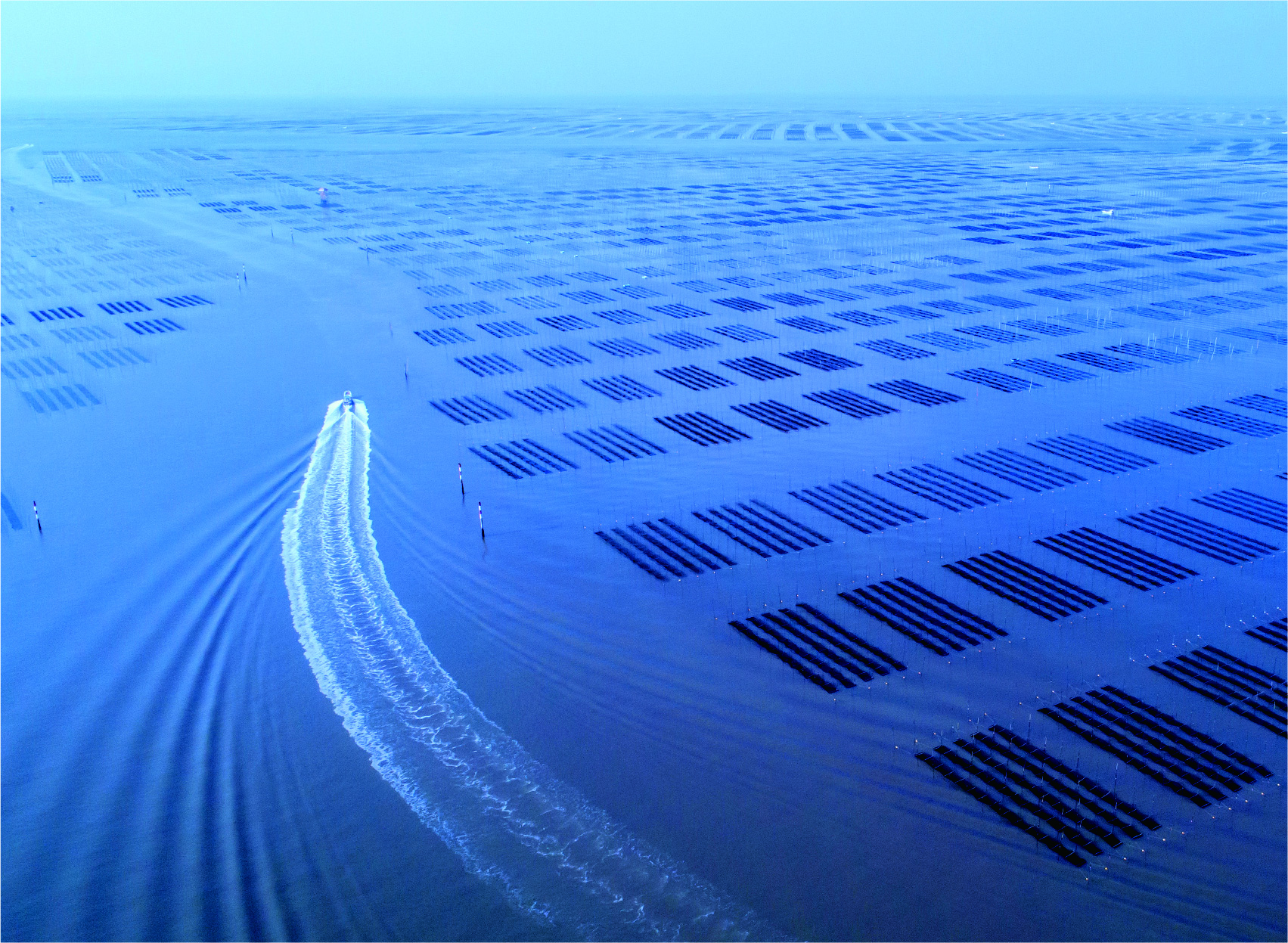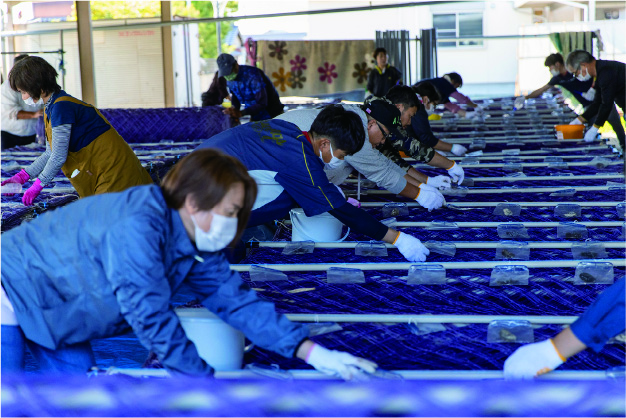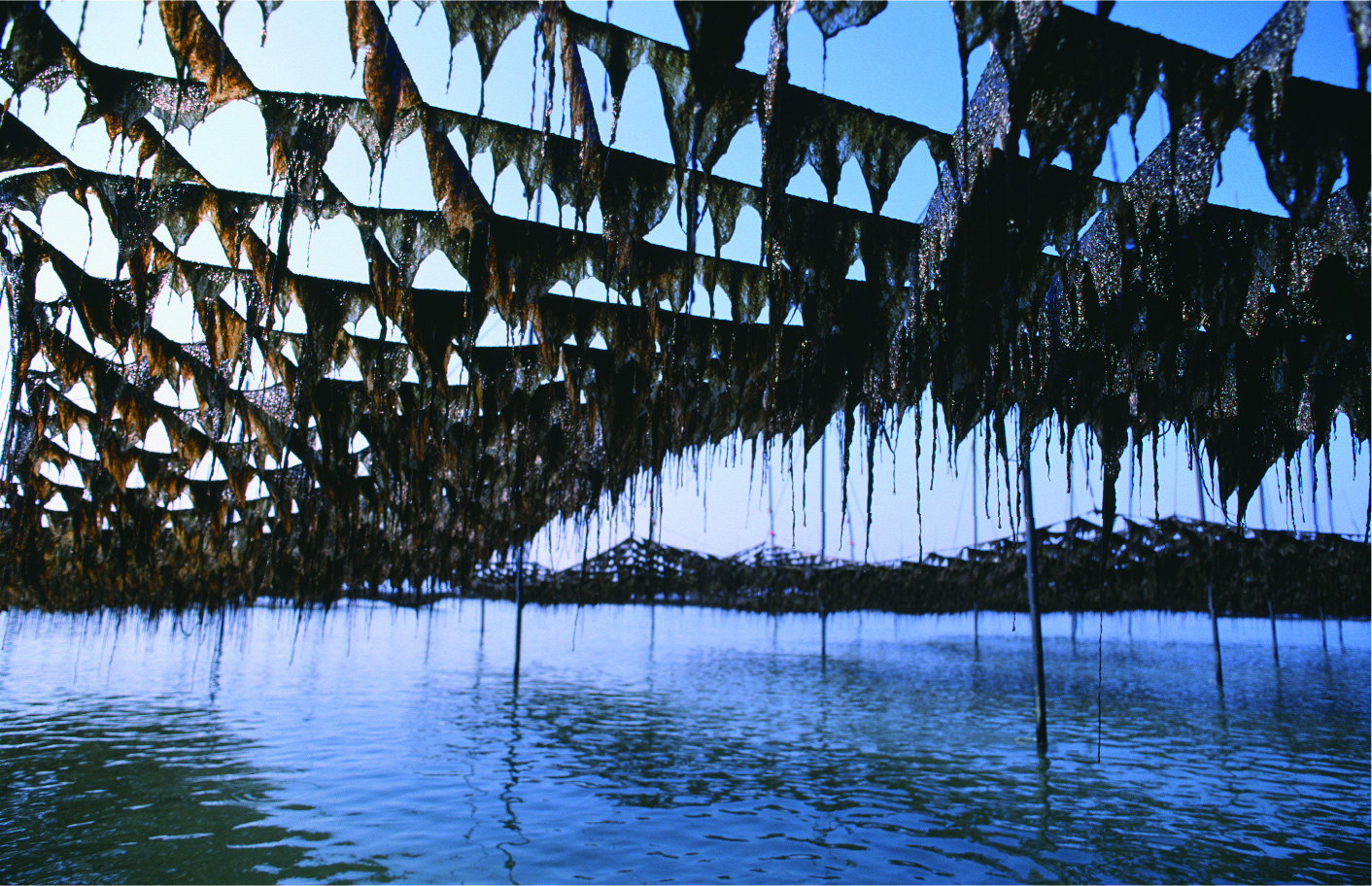〈Working On the Water〉 Fukuoka Ariake Nori from Yanagawa
Fukuoka’s Top-Class Nori Production Site
A nori aquaculture spot on the expansive Ariake Sea. Nutrients flow into the sea from several rivers, such as the Chikugo and Yabe Rivers, facilitating the cultivation of high-quality seaweed aided by a special technique called kanshutu to make it great in taste and texture.







Fukuoka Prefecture is one of Japan’s leading nori production locations. Four cities in the prefecture have coastline with access to the Ariake Sea—Okawa, Yanagawa, Miyama, and Omuta. Production of this essential marine food thrives in this part of the sea, one of the leading production centers in Japan. The area is a vast 171 square kilometers (roughly half the size of the city of Fukuoka itself). Counted in sheets, the annual production is 1.3 billion, selling for approximately 15 billion yen, which accounts for more than half of all fishery products in the prefecture by value.
Yuichi Nishida of the Fukuoka Ariake Association of Fishing Cooperatives explains, “Fukuoka Ariake Nori is delicate and tasty, and melts in the mouth. It is crispy to bite into, breaks down easily, and melts in the mouth so that the aroma and flavor can easily reach the taste buds.”
Nori is also grown on taut nets hung on poles driven into the sea bed, a method called shichu-shiki that takes advantage of the up to six-meter difference in tidal height in the Ariake Sea. The nets are hung at a fixed height on the poles so that at high tide the nori net sinks into the water, and when the tide recedes, the net is exposed to the air to dry. This exposure for drying is known as kanshutsu in Japanese. Ariake Sea nori absorbs the rich nutrients that flow into the sea from rivers as it grows. This daily process of exposure to the air protects the nori from pathogens in the sea that can cause diseases, but the seaweed takes longer to grow. The slower growth results in thinner cell walls and more tender nori.
Nori cultivation begins in mid-to-late October every year. In preparation for the season, spores of the seaweed are cultivated, known as protonema in the filament phase. These filaments attach to an oyster shell and work their way into the center, gradually covering it entirely, turning a white shell completely black.
It is the day before the annual ban on nori cultivation is lifted. The seeded oyster shells are tied onto the nori nets by all hands on deck. This is a sight you will see throughout the town as everyone prepares for the nori-growing season. Nishida hopes that more people around Fukuoka get to know that their prefecture is one of the top-level nori production areas in all of Japan.




